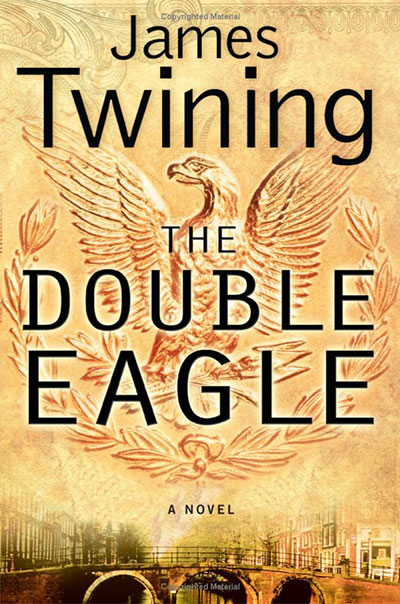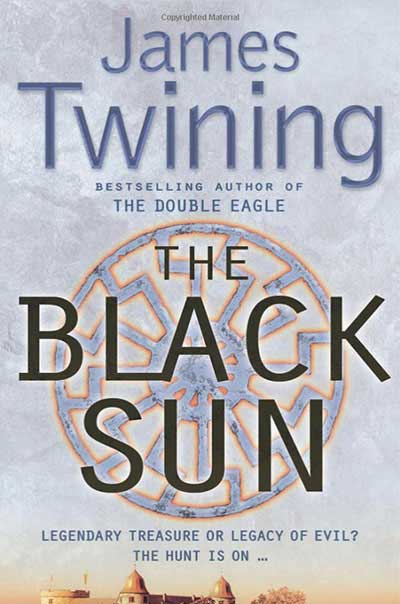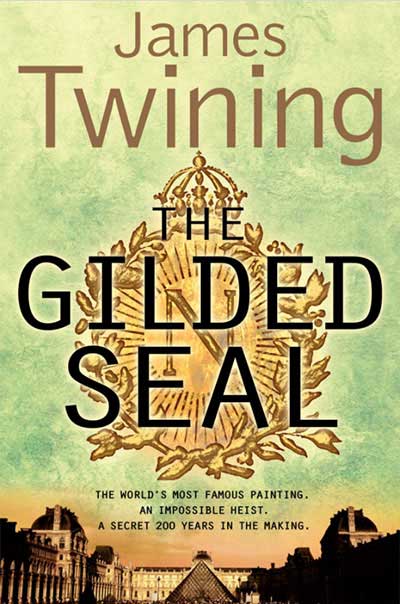Below you will find pictures and information on some of the medals and uniforms that feature in The Black Sun.
The Iron Cross (Eisernes Kreuz)
The Iron Cross was originally designed by the neo-classical architect Karl Friedrich Schinkel and was first awarded in 1813 during the Napoleonic wars. Its design echoes the maltese cross borne by the Teutonic Knights in the 14th century, which was also the emblem of Frederick the Great.
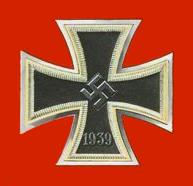
In contrast to many other medals, the Iron Cross has a very simple, unfussy design, and is made from relatively cheap and common materials. It was traditionally constructed of three pieces: the iron core, an obverse and a reverse silver frame and measured 43.5 to 45 mm across the frame.
The Iron Cross was issued in four main periods – 1813, 1870, 1914 and 1939. Each Iron Cross was therefore stamped with a year to indicate the era in which it was issued. All Iron Crosses from the Second World War contained a swastika centered on the decoration, as shown above. The reverse of the 1870, 1914, and 1939 series Iron Crosses also had the year “1813” engraved on it, commemorating the year the award was first created.
The Iron Cross was awarded in two grades – 1st Class and 2nd Class – without regard to rank (it was necessary to already hold the 2nd Class in order to receive the 1st Class, although in some cases both could be awarded simultaneously). The egalitarian nature of this award contrasted with most other German states (and indeed many other European countries), where military decorations were primarily awarded based on the rank of the recipient.
The Iron Cross was awarded for bravery in battle as well as other military contributions to a battlefield environment. The Iron Cross Second Class was worn as a chest ribbon with the cross suspended from the ribbon. The Iron Cross First Class was a pin-on medal worn centered on a uniform breast pocket. It is estimated that some 2.3 million Second Class Iron Crosses were awarded in the Second World War, and 300,000 in the First Class.
One of the most infamous holders of the 1914 Iron Cross 1st Class was Adolf Hitler, unusual because very few holders of the 1914 Iron Cross 1st Class were enlisted soldiers as Hitler was – he held the rank of Gefreiter, or Lance Corporal. Although Hitler proudly wore his Iron Cross he was suprisingly reticent about the circumstances surrounding its award. This may have been because Hitler was recommended for the award by his unit commander, Lieutenant Hugo Gutmann – a Jew.
The Knight’s Cross of the Iron Cross (Ritterkreuz des Eisernes Kreuzes)
The Knight’s Cross of the Iron Cross recognized extreme battlefield bravery or succesful leadership and was one of Nazi Germany’s most prestigious and famous awards – the Western equivalent might be the US Medal of Honor.
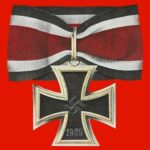
It was divided into five grades: Knight’s Cross, Knight’s Cross with Oak Leaves, Knight’s Cross with Oak Leaves and Swords, Knight’s Cross with Oak Leaves, Swords, and Diamonds, and Knight’s Cross with Golden Oak Leaves, Swords, and Diamonds.
In total, 7,313 awards of the Knight’s Cross were made, but only 883 received Oak Leaves and 159 received Oak Leaves and Swords (plus one honorary recipient, the Japanese admiral Isoroku Yamamoto). Only 27 men were ever awarded the Diamonds grade of the Knight’s Cross (10 ace pilots, 2 submarine captains, 1 colonel, 14 generals and fieldmarshals), and Hans-Ulrich Rudel was the only recipient of the Knight’s Cross with Golden Oak Leaves, Swords, and Diamonds.
The Knight’s Cross was larger than a Iron Cross, measurring 48.2mm to 48.8mm and was suspended from a 45mm neck ribbon of black, white, red, white, black material as shown above. In addition, the Knight’s Cross was made of real silver.
In The Black Sun, Tom and Archie discover clues engraved on the back of three Knight’s Crosses.
The Victoria Cross
The Victoria Cross (VC) is the highest military award that can be awarded to members of the British and Commonwealth armed forces of any rank in any service.
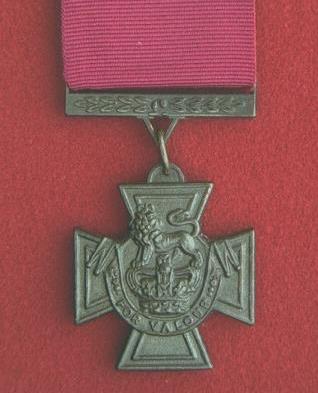
The medal takes the form of a cross pattée, 1.375 inches (35 mm) wide, bearing a crown surmounted by a lion, and the inscription “For Valour”. This was originally to have been “For Bravery”, until it was changed on the recommendation of Prince Albert (who played an active role in the design of the medal), who thought some might erroneously consider that only the recipients of the VC were brave in battle. The medal, suspension bar and link weigh about 0.87 troy ounces (27 g). The ribbon is crimson, 1.5 inches (38 mm) wide.
The VC was first issued on January 29, 1856, recognising acts of valour during the Crimean War of 1854-1855. All VCs are cast from the bronze cascabels of two cannon of Chinese origin that were captured from the Russians at the siege of Sevastopol, although during the First World War metal from guns captured from the Chinese during the Boxer Rebellion was also used. It has recently been argued, however, that it is unlikely that the metal used for the VCs really does come from these cannon.
The barrels of the cannon in question are stationed outside the Officers’ Mess at the Royal Artillery Barracks at Woolwich. The remaining portion of the only remaining cascabel, weighing 358 oz, is stored in a vault by 15 Regiment Royal Logistic Corps at Donnington. It is estimated that approximately 80-85 medals could be cast from this source. A single company of jewellers, Hancocks of London, has been responsible for the production of every VC awarded since the medal’s inception.
A total of only 1,355 Victoria Crosses have been awarded since 1856.
In The Black Sun, Wolfgang Schwartz claims to have a sister to the cannon used to make the VC.
SS uniforms
Background to the SS
The SS is probably the most infamous and the most compex of all the various Nazi organisations that flourished during the second world war. Often described as a “state within a state”, the SS grew from a small cadre of around 280 men charged with guarding Hitler at early Nazi rallies to a membership of millions.
The SS was made up of three separate and distinct branches, all related but equally unique in their functions and goals:
– The Allgemeine-SS (General SS) which was the main branch of the SS and primarily served a politicial and administrative role<
– The Sicherheitsdienst (Security Division) which was initially the Nazi party’s intelligence-gathering wing and which later merged with the Geheime Staatspolitzei (Gestapo), responsible for internal state security
– The SS-Totenkopfverbande (SS Deaths Head Organization) which was initially responsible for prisons, before taking over the concentration and extermination camps
– The Waffen-SS (Armed SS) which was an elite military formation that numbered nearly 600,000 men by the time WWII was over
The SS black uniform
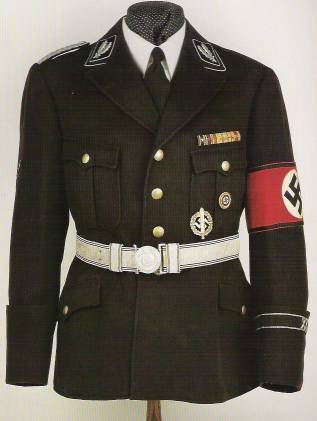
The SS’s infamous black uniform was introduced by Heinrich Himmler in 1932. It was designed by fashion designer Hugo Boss and although it was later replaced by a dove grey uniform, it was retained for ceremonial occasions. The Waffen SS wore a field grey uniform similar to the Wehrmacht. SS uniforms were made by the SS’s own factory known as SS-Bekleidungswerke. This was based at the Dachau concentration camp and manned with forced labour.
Alone among the fighting services, the SS did not wear the national eagle-and-swastika badge on the right breast. Instead, all ranks wore it high on the left sleeve. It was also of a special shape, the ends of the eagle’s wings being pointed, rather than clipped (perhaps as a veiled insult to their Wehrmacht brethren). The collar patches typically displayed the SS lightening bolts on one side and the soldier’s rank on the other – in theory, only German officers were allowed to wear the sig-runen.
Cuff Band
Most of the important Waffen-SS divisions were awarded unit cuff-bands. These appeared on the lower left sleeve, with regulations requring them to be worn 10mm above the turn-back of the cuff on the officers’ tunic, or about 160mm above the cuff of the other ranks’ tunic. They were of black cloth edged with silver braid, and about 1 1/4 inches (33mm) wide. In white, light grey or silver script, the divisional name was woven so as to appear on the outside of the sleeve. Most were in block letters but some were in Gothic or other special scripts.

An example of this is the cuff-band for the Adolf Hitler division shown above. Originally Hitler’s bodyguard unit, it eventually became a Panzer Division and fought on every European front. The cuff-band simulated Hitler’s signature, with the officer’s version in embroidered in silver-aluminum thread and the other ranks’ in white machined stitching.
Caps
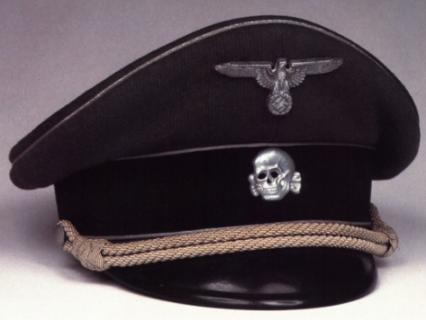
All SS units wore the Totenkopf or Death’s Head symbol on their caps. Its origins go back to the Prussian and Imperial German army when it was simply a symbol of German military might and bravery.
In The Black Sun, Archie and Tom discover a black SS uniform that has a special gold thread cuff band inscribed with the name of a secret unit – Der Totenkopsorden – The Order of the Death’s Head. In addition, they find a cap where the usual death’s head symbol has been replaced by the symbol of the Black Sun.

